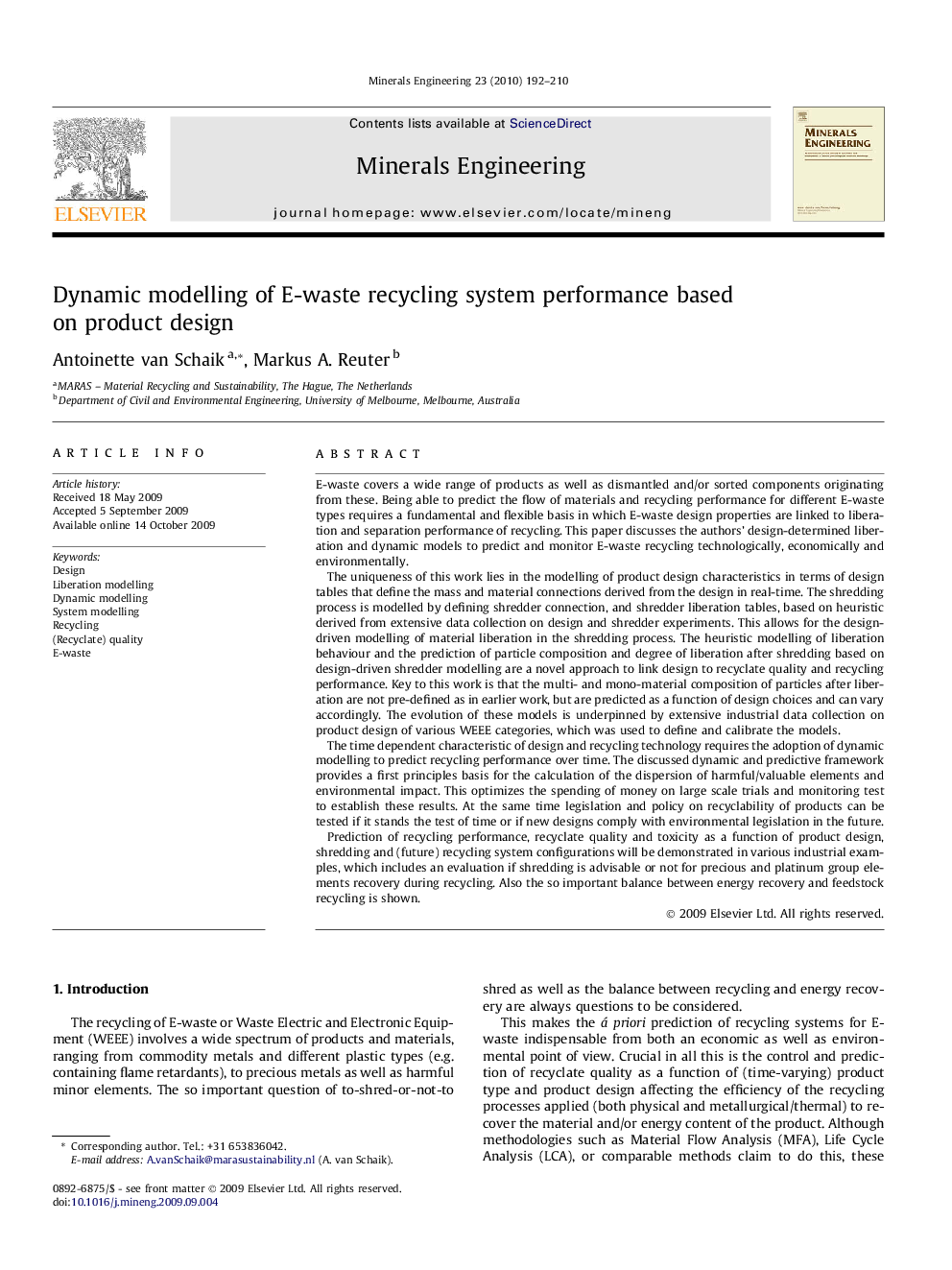| کد مقاله | کد نشریه | سال انتشار | مقاله انگلیسی | نسخه تمام متن |
|---|---|---|---|---|
| 234227 | 465394 | 2010 | 19 صفحه PDF | دانلود رایگان |

E-waste covers a wide range of products as well as dismantled and/or sorted components originating from these. Being able to predict the flow of materials and recycling performance for different E-waste types requires a fundamental and flexible basis in which E-waste design properties are linked to liberation and separation performance of recycling. This paper discusses the authors’ design-determined liberation and dynamic models to predict and monitor E-waste recycling technologically, economically and environmentally.The uniqueness of this work lies in the modelling of product design characteristics in terms of design tables that define the mass and material connections derived from the design in real-time. The shredding process is modelled by defining shredder connection, and shredder liberation tables, based on heuristic derived from extensive data collection on design and shredder experiments. This allows for the design-driven modelling of material liberation in the shredding process. The heuristic modelling of liberation behaviour and the prediction of particle composition and degree of liberation after shredding based on design-driven shredder modelling are a novel approach to link design to recyclate quality and recycling performance. Key to this work is that the multi- and mono-material composition of particles after liberation are not pre-defined as in earlier work, but are predicted as a function of design choices and can vary accordingly. The evolution of these models is underpinned by extensive industrial data collection on product design of various WEEE categories, which was used to define and calibrate the models.The time dependent characteristic of design and recycling technology requires the adoption of dynamic modelling to predict recycling performance over time. The discussed dynamic and predictive framework provides a first principles basis for the calculation of the dispersion of harmful/valuable elements and environmental impact. This optimizes the spending of money on large scale trials and monitoring test to establish these results. At the same time legislation and policy on recyclability of products can be tested if it stands the test of time or if new designs comply with environmental legislation in the future.Prediction of recycling performance, recyclate quality and toxicity as a function of product design, shredding and (future) recycling system configurations will be demonstrated in various industrial examples, which includes an evaluation if shredding is advisable or not for precious and platinum group elements recovery during recycling. Also the so important balance between energy recovery and feedstock recycling is shown.
Journal: Minerals Engineering - Volume 23, Issue 3, February 2010, Pages 192–210